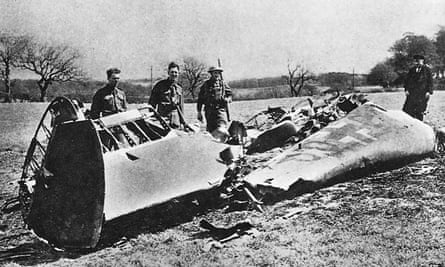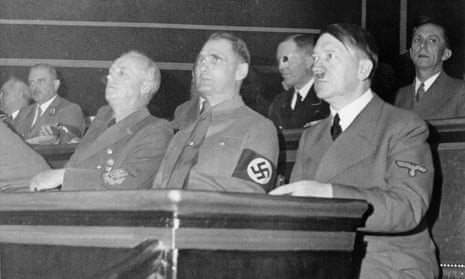Editorial: Rudolf Hess
The story of Rudolf Hess is one of the strangest things in Nazi history. With the disclosure of his arrival in Scotland the pieces of an extraordinary episode begin to fit together. From the beginning the wonder was that his disappearance was not represented as a simple flying accident. Instead the minds of the German people were confused with a remarkable story of this great figure in the Nazi hierarchy as the victim of hallucinations, a madman apparently in the habit of flying alone, and who flew once too often, either meeting with an accident or committing suicide.
Why all this elaboration? No one, either in Germany or out of it, could accept the version as fact. Memories are still too fresh of the official explanations of the “night of the long knives” of June 30 [1934], when Hitler purged his party and allowed some of his greatest intimates to be murdered. Perhaps it was the fate of Rohm that led Hess to make his desperate flight to Britain. What the internal trouble was among the Nazi leaders we do not know – thieves keep counsel. Hess could only have been in immediate peril of his life. No doubt the next thing we shall hear is that a body has been found in Germany and that the true Hess is an English invention. But the truth must get through even to Germany. Let us hope that Hess who was so far sane as to bring with him full evidence of identity, will also talk. He may be worth an Army Corps.

Of all the Nazi leaders Hess seemed the most devoted to his chief. Although he was never so much in the public eye as Goring or Goebbels, or even Himmler and Ley, and during the war had dropped back behind the Service leaders, he was still at one remove Hitler’s named successor. His loyalty has never been questioned; he was never accused of self-seeking. His association with Hitler went back to the beginning of the party; he served with him in prison and was his secretary when Mein Kampf was written. Indeed, it is one of the great literary mysteries whether that amazing book was not more the work of the relatively well educated Hess than of the self-educated wayward genius Hitler. Hess was content to serve his master, to repeat his sentiments, and to carry out his orders. He received high preferment, became deputy leader, in control of the party organisation, and was always regarded as Hitler’s closest friend. Certainly no man was his more constant companion.
